The 48 hours that unnerved a city
- Published
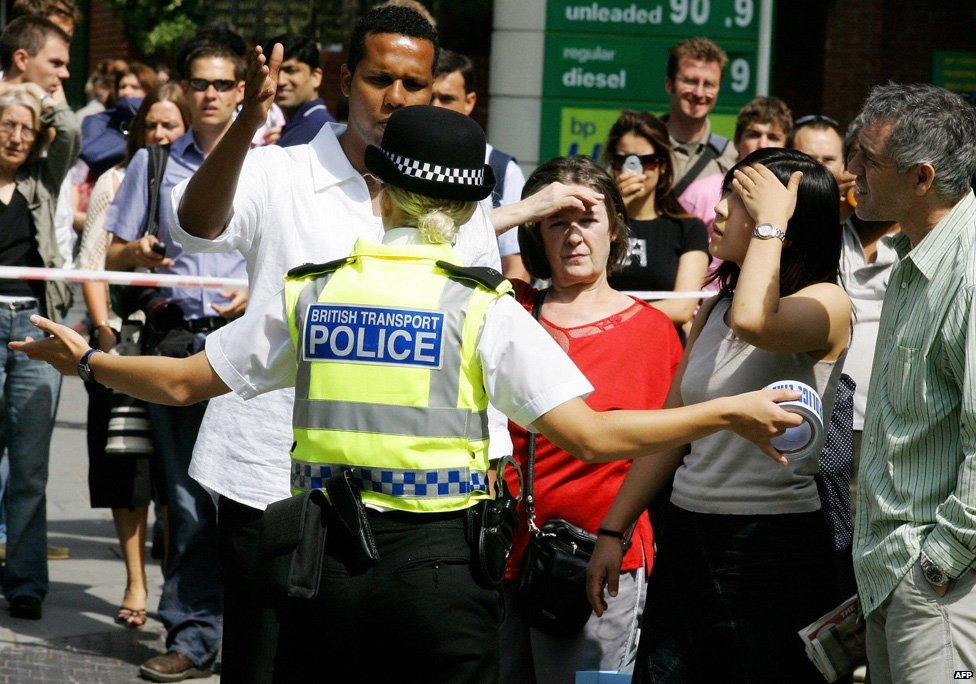
The attempted bomb attacks on London on 21 July 2005, and the subsequent mistaken shooting of Jean Charles de Menezes the following day, prompted a wave of shock and anxiety, writes historian Dominic Sandbrook.
Late on the morning of 21 July, a young man called Abisha Moyo set off to Hammersmith for a job interview.
Originally from Zimbabwe, he had lived in London for 10 years. When terrorists had attacked the London Underground on 7 July, he had been out of the country. And now, as he boarded a Hammersmith and City Line train at Paddington, the last thing he expected was that it would happen again.
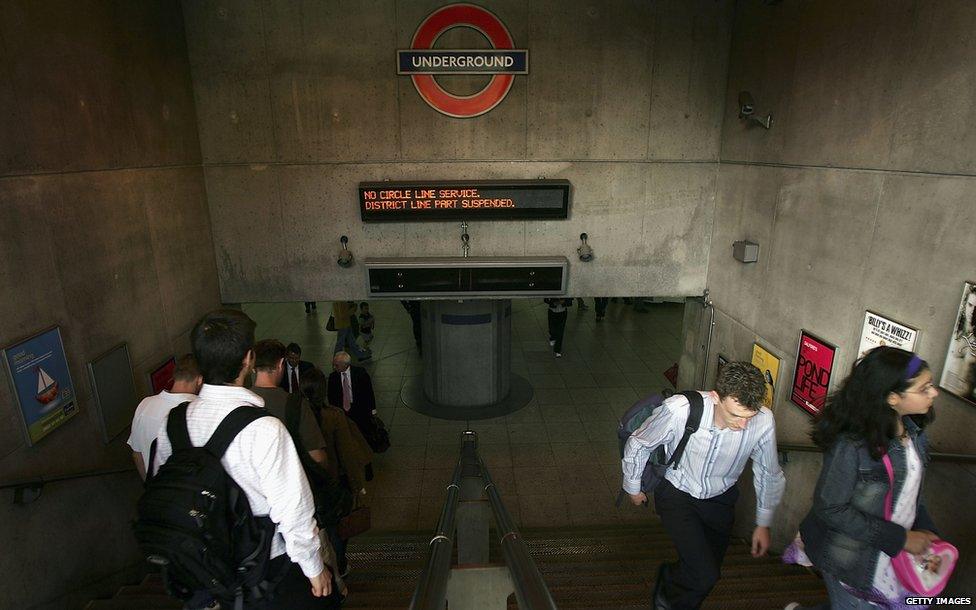
Commuters at a Hammersmith and City Line Tube station, 21 July 2005
Moyo was looking at his phone when he heard a loud bang. "I turned round and thought someone had been shot because there was a man lying on the ground with his arms outstretched in a Jesus Christ position lying on top of a rucksack face up," he told the press a few hours later.
"He had his eyes shut and there was a puff of smoke coming from the bag. Some girls started screaming, the emergency cable was pulled and everyone starting running away from him towards the front of the train."
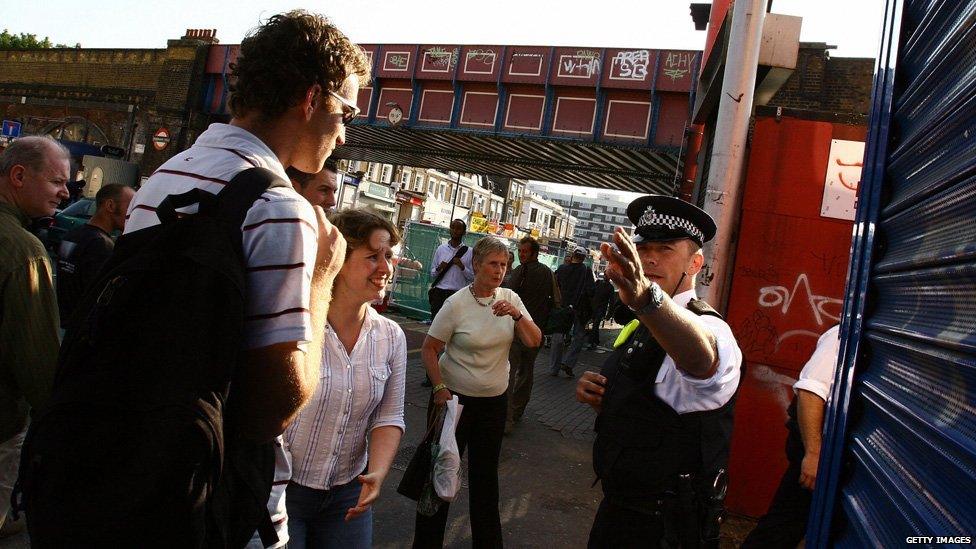
A police officer directs commuters trying to make their way home near Shepherd's Bush
It was only when the man stood up, revealing the copper wire trailing from beneath his T-shirt, that Moyo realised, with a terrible sinking feeling, that he was looking at a would-be suicide bomber. But the bomb never went off - instead, the man just jumped off the train and walked away.
While Abisha Moyo and his fellow passengers were being ushered away by police, similar scenes were unfolding across the Tube network that Thursday morning. Two weeks after the 7/7 bombings, London was once again a city under attack.
By lunchtime there were reports of attempted bombings at Oval and Warren Street stations, while the driver of a number 26 bus heading along Hackney Road heard an almighty bang as an explosion went off on his top deck. And that afternoon, as police cordoned off part of University College Hospital in the search for the would-be bombers, there was already a sense of paranoia in the air.
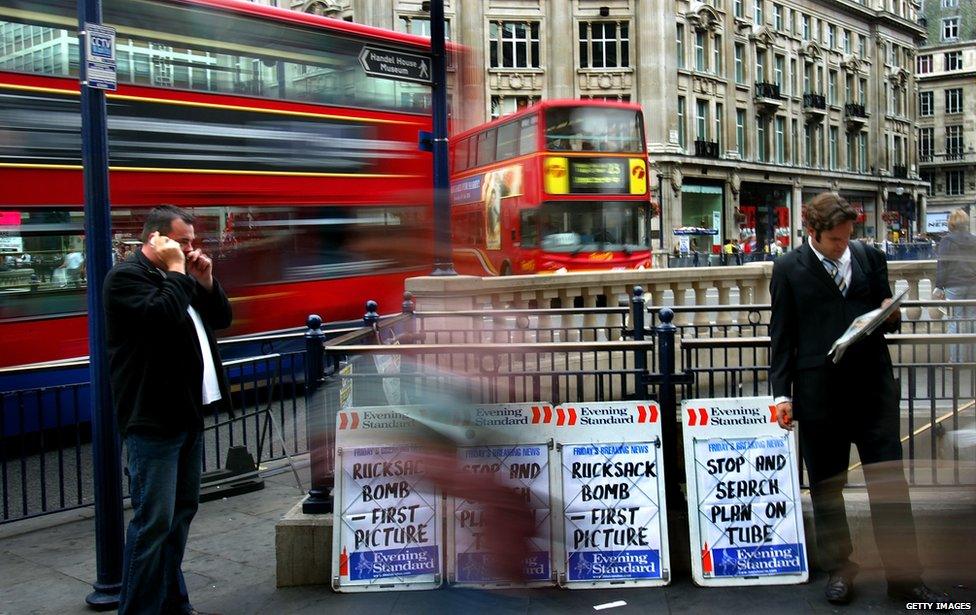
Nobody died on Thursday 21 July, but it was nevertheless a terrible reminder of London's vulnerability to domestic terrorism, and of the apparently ubiquitous threat of Islamist extremism. Yet it was an event the next morning that became the defining moment of that dreadful week.
With the police having launched one of the biggest manhunts in British history - which the Metropolitan Police Commissioner Sir Ian Blair described as "the greatest operational challenge ever faced" - the mood could hardly have been tenser.
At 09:30 on Friday morning, a Brazilian-born man called Jean Charles de Menezes left a house that police had identified as the home of a possible suspect. He was an electrician, on his way to a job in Kilburn. But the police, anxious to prevent another Tube attack, jumped to the wrong conclusion.
Half an hour later, after Menezes had boarded a Tube train at Stockwell, the police made their move. What followed was not merely a mistake but an appalling tragedy, as police officers opened fire on an innocent man, killing him immediately.
Ten years on, the failed bombings of 21 July and the shooting of Jean Charles de Menezes are still etched on London's conscience. Nobody who lived in the capital will easily forget the mood, an extraordinary blend of suspicion, anxiety, anger, defiance - and fear.
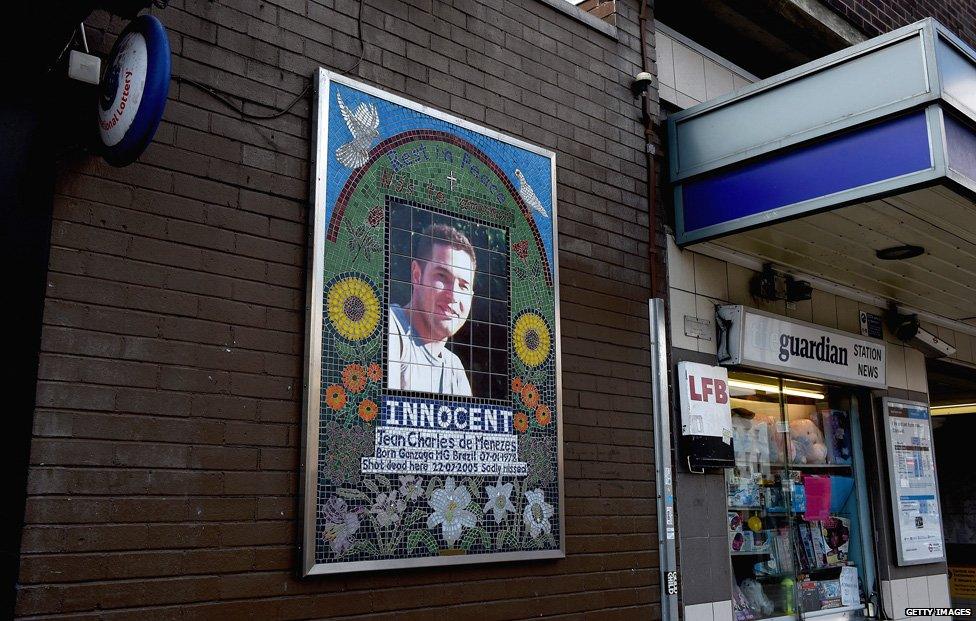
A permanent memorial to Jean Charles de Menezes was put outside Stockwell station in 2010
The headlines at the end of that week said it all. "Britain Will Not Be Beaten" screamed the front page of the Daily Express, below an arresting image of a heavily armed police officer cornering a civilian - who turned out to be entirely innocent - outside the gates of Downing Street.
"This latest assault," said an editorial, "simply drives home the fact that we are all at the frontline of a brutal and bloody war, one that is only just beginning. We must all be vigilant."
London had, of course, been attacked before. Many newspapers drew comparisons with the Blitz. But during the Edwardian period, the city had been overshadowed by fears of anarchist terrorism, while the spectre of the IRA bomber had haunted Londoners' collective imaginations during the 1970s and 1980s.

Who was Jean Charles de Menezes?
Jean Charles had been working as an electrician in London, after arriving in 2002. His cousin, Alex Pereira, says Jean Charles convinced him to go to England in search of a better future. On 22 July, he was followed to Stockwell station, pinned down and shot seven times in the head. The Metropolitan Police officers responsible had thought they were trailing Hussain Osman, a suspect for the previous day's failed bombing attempts on the London transport network.

Yet the events of July 2005 felt different, the atmosphere even more feverish, more charged, more uncertain. And in a sense, the killing of Menezes, tragic and shocking as it was, hammered home the point. That the young Brazilian electrician was in Britain at all testified to the capital's role as the crucible of globalisation, a magnet for migrants from all over the world, a melting pot of nationalities and religions.
But it was precisely the capital's sense of flux and change, its dizzying variety and disorder, that made it seem so vulnerable to attack, heightening the atmosphere of suspicion. Might your neighbour be a terrorist? What about the man down the street - or the woman at the end of the Tube carriage? What about him? Or him?
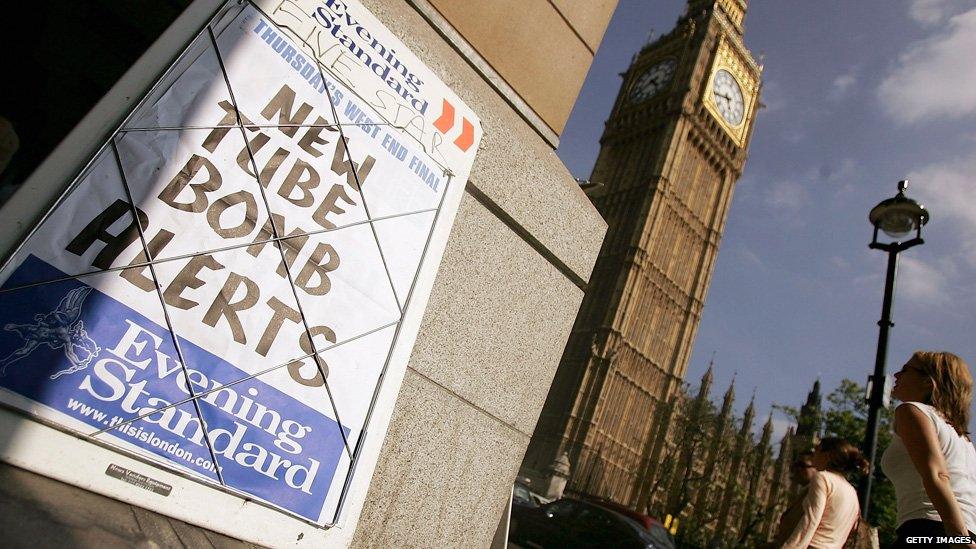
Looking forward, some commentators predicted a future of relentless terrorist attacks on the British capital. Indeed, just over a year later, the science-fiction parable Children of Men painted a terrifying portrait on film of a future London haunted by terrorism, in which trigger-happy police round up immigrants in Britain's railway stations and the South Coast has become a giant refugee concentration camp.
But perhaps it would be wrong to see the story of 21 and 22 July 2005 merely in terms of a nightmarish excursion into collective paranoia. The threat of Islamist extremism was real, of course, and it has never gone away.
Although many experts predicted that London would never be safe from the threat of terrorism, such incidents have been mercifully rare. As in the 1900s, the 1940s and the 1970s, the city recovered.
The capital nursed its wounds, while the Menezes family, already furiously demanding answers, mourned their tragic loss. But as the sun rose the following Monday, thousands of people were pouring into the city's Tube stations, as normal.
London was going back to work - anxious, even frightened, but determined to show that it could never be beaten. Life went on. It always does.

7 July London bombings: Read more
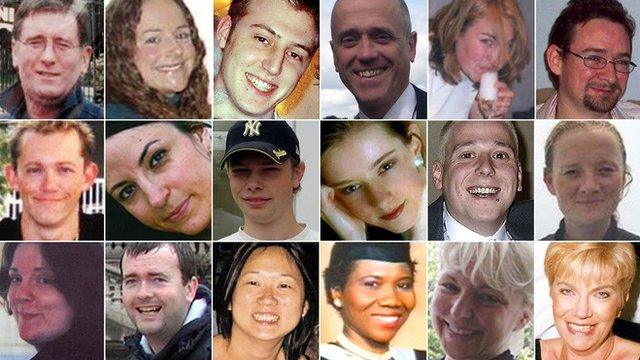

Subscribe to the BBC News Magazine's email newsletter, external to get articles sent to your inbox.